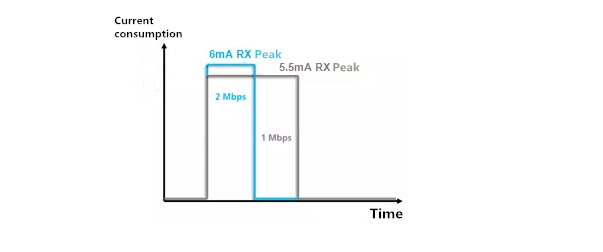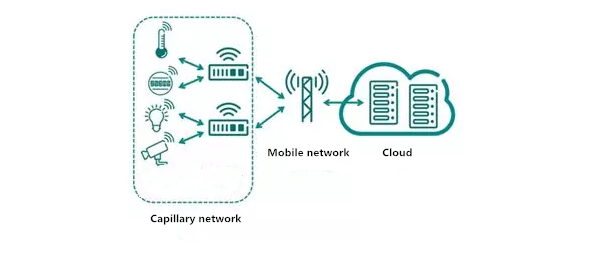The latest core specification of Bluetooth technology-Bluetooth 5, contains many new breakthrough enhancements. The Bluetooth Mesh network is a software-level solution that can run on Bluetooth low energy solutions without Bluetooth 5 support. The Bluetooth Mesh network and Bluetooth 5 technology provide the most important innovation of Bluetooth technology since its appearance. They add a large number of new application examples, some of which are closely related to the Industrial Internet of Things.
Among the three major improvements of Bluetooth 5, the most noteworthy is the increase in data transmission speed. Compared with the previous version of Bluetooth 5, Bluetooth 5 has a 2 Mbps physical transmission rate (PHY) that transmits twice the amount of data per second. Although the power consumption is slightly increased when transmitting the same amount of data, the transmission time is reduced by half. Compared to Bluetooth 4.2, the total power consumption is reduced by almost 50%.

In addition to faster data transmission, the transmission time is also greatly shortened, and the broadcast on time is also shorter, which enables Bluetooth devices to be better used in combination with other 2.4GHz wireless broadcast devices (including other Bluetooth low energy connections).
Bluetooth Mesh Network
Shortly after the introduction of the Bluetooth 5 specification, the Bluetooth Technology Alliance introduced the Bluetooth Mesh network specification. Bluetooth 5 and Bluetooth Mesh networks have laid the foundation for many new Bluetooth applications, which are especially important for the Industrial Internet of Things.
The purpose of the Bluetooth Mesh network is to make Bluetooth devices interoperable. The main technical design revolves around:
• Publish / subscribe model
• Controlled network flooding
• Compatible with low power nodes

Nodes in the relay network support listening for messages at any time. This means that they cannot operate in low-power modes. However, low-power nodes can maintain friendly connection relationships with relay nodes. In this connection relationship, the relay node temporarily stores data until the low-power node is activated. Data is then exchanged within a short period of time when the low-power node is activated.
Bluetooth 5 in Industry 4.0
The enhancements provided by Bluetooth 5 have laid the foundation for many new industrial IoT applications. With a transfer rate of 1.4Mbps, it takes only 7 seconds to send a 1MB firmware file, which is sufficient for many embedded industrial products. Industrial devices running embedded firmware (such as variable frequency drives) can also use Bluetooth low energy connections to transfer firmware files, enabling wireless firmware upgrades for the device (DFU-OTA).
For example, large industrial sensor networks: capillary networks

Bluetooth 5 and Bluetooth Mesh networks can connect a large number of sensors to a large network, thereby supporting capillary sensor networks. Compared with other short-range technologies, using Bluetooth as a short-range radio has multiple advantages. The main advantage is that almost all smartphones and tablets support Bluetooth, making it the best tool for sensor and network configuration.

